Photo: Christopher Douglas
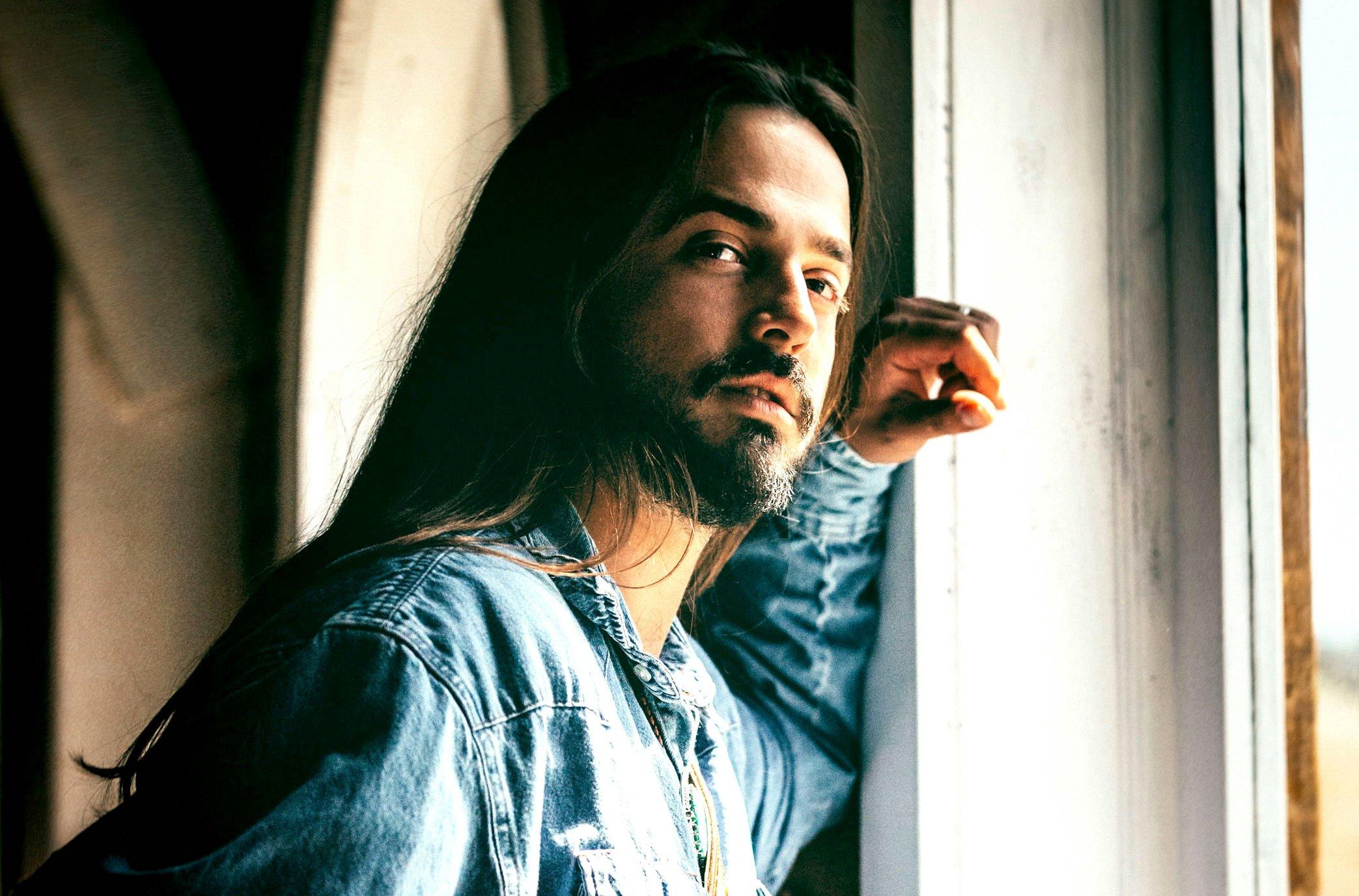
feature
Ian Munsick Is Bringing The West To The World With 'White Buffalo'
The Wyoming-born country singer's second album, 'White Buffalo,' puts his love for the West on full display: "Those people are who I make my music for."
To some, the cool of the Rocky Mountains and its cowboy-populated plains might seem like the setting of an old Hollywood Western. But to Ian Munsick, it's real life — and he wants you to come along for the ride.
The Wyoming native's second album, White Buffalo, doubles down on the Western roots sprinkled across his debut set, 2021's Coyote Cry. Its 18 tracks take listeners straight to the vast and mountainous landscape of Munsick's home state, but also help shine light on the hard-working mentality of those within it.
It's a project that Munsick has always wanted to make, but never really believed he could upon moving to Nashville at 19 years old — in part because he wasn't sure if the artist path was his calling, but more so because he wasn't sure if the stories he wanted to tell would resonate. Yet Munsick's first song, "Horses Are Faster," caught on regionally before he even moved to Nashville, and Coyote Cry was excitedly received. The singer realized his future might not be so uncertain, and he releases White Buffalo with mountain-high confidence.
"Coyote Cry, the tracks on there that people resonated with the most were all about the land and the lifestyle and what makes the Rocky Mountains unique," Munsick recalls to GRAMMY.com. "I think that people are just hungry for the real deal of the West. And if they can't go there, then hopefully they can just press play on my music and be there. That's always the main goal with my music — I want my listeners to be able to close their eyes and be in Wyoming."
Within the first few strokes of fiddle on White Buffalo opener, "From the Horse's Mouth," it's clear that Munsick has aced his mission. The track's scampering melody accents his region's raw, no-bull mindset ("I won't say it behind your back what I won't tell you to your face/ That's just the cowboy way," he declares in the second verse); the song's swirling production carries through the album, too, whether over a mandolin-driven melody in "Bluegrass" or the echoing nostalgia of the title track.
White Buffalo's song titles alone are transportive, from "Ranch Hand" and "Long Live Cowgirls," to "Field of Dreams" and "Indian Paintbrush" — the latter of which is the state flower of Wyoming. One of the more jarring (yet fitting) titles is "Cows— in the Morning," which is a clever take on a breakup song. And though the overtly positive, madly in love Munsick admits he's not great at writing those, he found the perfect breakup metaphor within his cowboy lifestyle: "I'd rather smell cows— in the morning/ Than put up with her bulls— every night."
While he echoes that scorn on "Barn Burner" ("She broke my heart then her barn burned down/ Like one thing led to the other," he sings on the chorus), White Buffalo mostly carries the humility, heart and gratefulness that Wyoming has instilled within Munsick. On "Little Man," he delivers a touching tribute to his 3-year-old son, Crawford; "More Than Me" blends faith with the love for his wife, Caroline. And even when he finds himself in heartbreak on tracks like "River Run," Munsick brings himself back to the peace of the plains: "We just settle like the dust when the day is done/ Her and the river run."
Munsick's ability to turn his Western upbringing into relatable sentiments is the epitome of what makes him special. There's never a moment that feels disingenuous on White Buffalo, and his passion for his homeland — from the culture to the people — rings through in both the lyrics and the musicality.
Yet somehow, his twangy vocals and knack for an infectious melody make White Buffalo feel like it belongs alongside Munsick's radio-friendly country contemporaries — even if he's not singing about beer and trucks. "We don't need any more of those," he says with a smile.
As he continues to dive deeper into the ways of the West, Munsick also recognizes the responsibility that comes with being one of the few current country stars from that region. While he largely aims to debunk beliefs that cowboys and Native Americans are enemies ("people think that it's the 1800s," he quips), Munsick also wants people to know how much both communities respect their land and their traditions.
The singer highlights where he grew up and the people he grew up with, including members of the Crow and Blackfoot Tribes, in the video for "White Buffalo." Between his music and the visuals, Munsick is hoping to shed more light on what he calls a "hidden lifestyle" — and to show that it's not as different as it may seem.
"People living in the Smoky Mountains and people living in the heartland, they're good people that work hard every day, and are just grateful for what they have," he says. "There's nobody more country than the people that live out there."
With nearly 400 million global streams to his name before White Buffalo even arrived, there's no denying that Munsick is reaching audiences outside of his part of the country. But as for those who are in it — whether it's members of the Crow Tribe or fans from the area — they're proud to see their culture presented on a wider scale. Even if the commercial success wanes, Munsick can already rest assured he's done his upbringing justice.
"At the end of the day, if they're the only people that listen to my music, that'll be fine, because those people are who I make my music for," he says. "And I just feel very honored to be able to represent them in country music."
Meet Levi Platero, A Formidable Guitarist Bringing Blues-Rock To The Navajo Nation
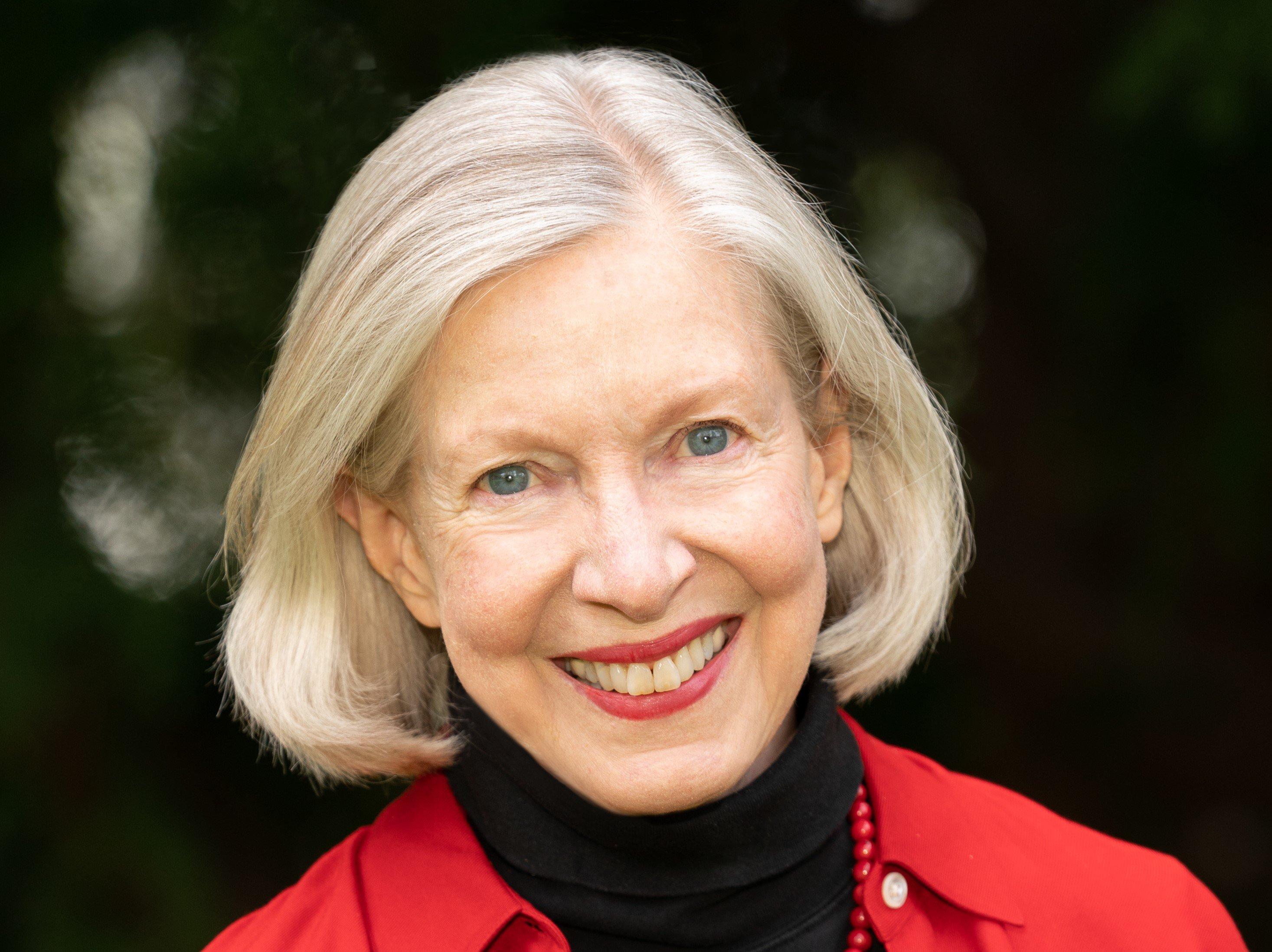
Photo: Ellen Crane
interview
Living Legends: Classical Producer Judith Sherman Details Her Path To Producer Of The Year & Why Lifelong Learning Is Essential
"You have to build a trust with the musicians, and it has to be the kind of trust that goes both ways," the GRAMMY-winning producer says.
Judith Sherman remembers winning her first GRAMMY Award in 1994 with something resembling disbelief. That year, inside New York’s Radio City Music Hall, Whitney Houston opened the Ceremony with "I Will Always Love You"; U2's Bono presented Frank Sinatra with a GRAMMY Legend Award, and Lifetime Achievement honoree Aretha Franklin sang "(You Make Me Feel Like) A Natural Woman."
"It was just incredible," Judith recalls, reflecting on the moment for GRAMMY.com. "I got to meet Maya Angelou, and Peter, Paul and Mary. And I sat at a table afterward with [the members of] U2."
Sherman's very presence in that room would have been a complete shock a little more than two decades earlier. Back then, in the mid-'60s, she was a seventh-grade English teacher in West Seneca, New York, trying to figure out her next move as her first marriage was breaking up.
Though Sherman didn’t originally set out to be a producer, she was always surrounded by music. Everyone in her family seemed to play something, and no matter where they were, they were singing all the time. "And I do mean all the time," she says.
Sherman decided to tap into that passion and enrolled in a grad school program at the University of Buffalo as a vocal performance major. "I wanted to be in the music field, even while I was teaching. I was singing in a chorus and going to a lot of concerts. The draw was always music, I just didn't know what I was going to do. I thought I might be a singer, and I did try composing, which I was really bad at," she remembers. "But, you know, one thing led to another, and as I always tell people, I got here through a series of fortuitous accidents."
Today, Sherman’s work recording and producing solo and chamber music has earned her 15 GRAMMY Awards (seven of them are for Classical Producer Of The Year). She launched her own production company, Judith Sherman Productions, and has been recognized for her dedication to the classical music community.
More recently, she participated in the Recording Academy’s online learning experience, GRAMMY GO, providing her insights in Carolyn Malachi’s class, Music Production: Crafting an Award-Worthy Song.
Sherman spoke with GRAMMY.com about her decades-long career and what continues to inspire her as a classical music producer.
How exactly does one go from teaching English class to becoming a GRAMMY Award-winning producer?
Music was always a part of my life, but so was language, so I graduated as an English major. When my first marriage ended, I decided that I did want to pursue music, so I managed to get into grad school at the University of Buffalo as a singer. It’s a two-year program, and during that first semester, I needed another course, and there was an electronic music class there. I thought, Well, that sounds interesting, because I’d always loved physics, so I signed up for that and got hooked.
You were going to school in the early '70s when so many things were changing in regards to sound recording and music technology. What kind of learning environment did that create for you?
At that time, the music part and the technical part were growing together.
My last two semesters there, I was the TA for the Electronic Music Lab. In those days, if you were going to make a piece of electronic music, you had to record it to tape and overlay it, and so on. So you had to know how to calibrate a tape machine, and if you were going to do that, you might as well start learning about the microphones. I just kept going from there.
After graduating, what kind of opportunities led you on the path toward classical production?
I came to New York and worked in a jingle house, and then went on tour singing with [contemporary classical composer] Steve Reich. After that, I found a job with WBAI in 1972. That was a listener-funded radio station, and it was housed in a former church, so the back area with the balcony became a recording studio, and we would have concerts there.
We had two concerts a week, and I learned a lot about my technique very quickly because my mistakes were going to go on the air. It was a musical education for me, because I got to hear so many kinds of music. I recorded small chamber orchestras, but also Ravi Shankar, jazz groups, blues groups, just a little bit of everything.
Who were some of the music figures who shaped your career?
When I was leaving WBAI, I managed to get a job as the recording engineer for the Marlboro Music Festival in Vermont. It was started by Rudolf Serkin and the Busch family of the Busch String Quartet, and they were looking for a recording engineer. Rudolf was a childhood hero of mine, so I really loved that job.
My boss was Mischa Schneider, who had been the cellist for the Budapest String Quartet, and I learned so much from him. Even when he couldn’t see the musicians, sitting in the studio, he would say, "Why are you using the fourth finger there? You should be using the third finger on that note." He could actually hear the difference through the speakers.
During that time is when I started producing some things. An engineer from Vanguard Records was going to do a classical recording for another label and asked if I wanted to produce it. I had done some pop stuff, some folk music, but I thought, Gee, I think I’ve been training for this my whole life.
It seems like the world of production and music recording is always evolving. How did those changes affect you?
I started producing in the days of analog tape. So I would take things home to an old Ampex tape recorder with stacks of tapes to edit with a razor blade. Later, I ran into another engineer who was editing on a computer. I went and watched him work, and it was very slow, and very cumbersome, but not as cumbersome as editing tape. So when the next generation of that technology came along, I bought one, and that sort of changed everything.
How do you know when you’ve had a good session?
I’m always happiest at the end of a session, when a musician says, "Wow, that was so much more fun that I thought it was going to be." The idea is to make the sessions as stress-free as possible, because musicians can get a little stressed out about being recorded, but the point is that we're all going in the same direction.
You recently shared some of your expertise in a GRAMMY GO class. What kind of advice would you offer to aspiring producers?
You have to build a trust with the musicians, and it has to be the kind of trust that goes both ways. So even when I think that we already have it, if a musician says, "Well gee, I’d really like to do that over again," we’ll do it because they might have just had this really magical thought.
I listen to them, but I also have to remind them that the way they feel doesn’t always translate to how it sounds. But they have to know that I'm on their side. I want them to sound good.
What would you say are the challenges unique to classical music production?
For the most part, we want to capture the performance as it was. With a lot of pop music, the song is being created in layers. With classical music, it’s mostly done live. All of the musicians are in the same room performing together. Everything is being done at the same place, at the same time, and those little balances and tweaks are things the musicians have to create live.
It varies whether you’re recording a chamber group, or a solo pianist, or a string quartet. With a string quartet, for example, everyone is exposed. You can hear everything each of them are doing, so if anybody loses focus for a second, that take will need to be edited. It takes a lot of concentration from everybody to be listening to everyone else around them.
Do you remember winning your first GRAMMY at the 36th GRAMMY Awards?
I was in tears because at that time, I was married to Max Wilcox, who was a very-well known producer. I just figured in those days that you had to work for a label in order to get a GRAMMY and I had never worked for a label. I've always been freelance, so I was shocked.
I was euphoric just getting that nomination, and I certainly didn't think I would win, so when [clarinetist Richard Stoltzman] presented the award and said my name? Well, this happens every time I hear my name [at the GRAMMYs], but I just completely forget who I am, and the only thing I can think is, don’t trip. It’s thrilling every time.
What keeps you excited and engaged when it comes to your job?
I like it because I learn so much music. When I go into a session, I have to know the music well, and by the time I’m finished editing, I know it intimately. I get to learn so much, and I don't have to practice [Laughs.] That's a limiting factor for musicians. They can't be learning a new piece every week, because they’ve got to be able to perform it. I don't have that problem.
What’s ahead for you? Are there still items left on your bucket list?
For 50 years now, I have wanted to do a recording of the three Benjamin Britten quartets, and I'm going to get to do that next year finally. That’ll be with the Calidore String Quartet next year, which is the 50th anniversary of Britten’s death.
What is it like to operate in the world of classical music? How different is it from other genres?
We all sort of root for each other because there are so few classical recording producers, maybe just 40 of us in the world, and there are very, very few labels who underwrite the recording of classical music.
Looking back on your career, how do you see your impact on the world of classical music?
You know, I recently went to a concert of a string quartet that I've been recording, and they said, "At our rehearsals, we'll get to arguing about something, and we’ll say, ‘Would Judy approve?’" So I know I have had an impact on the musicians that I've worked with. I know that my work is not going to save the world, but at the same time, I also know that it has made a lot of people’s lives richer — both the musicians and the listeners — and that’s all I can really ask for.
Latest News & Exclusive Videos
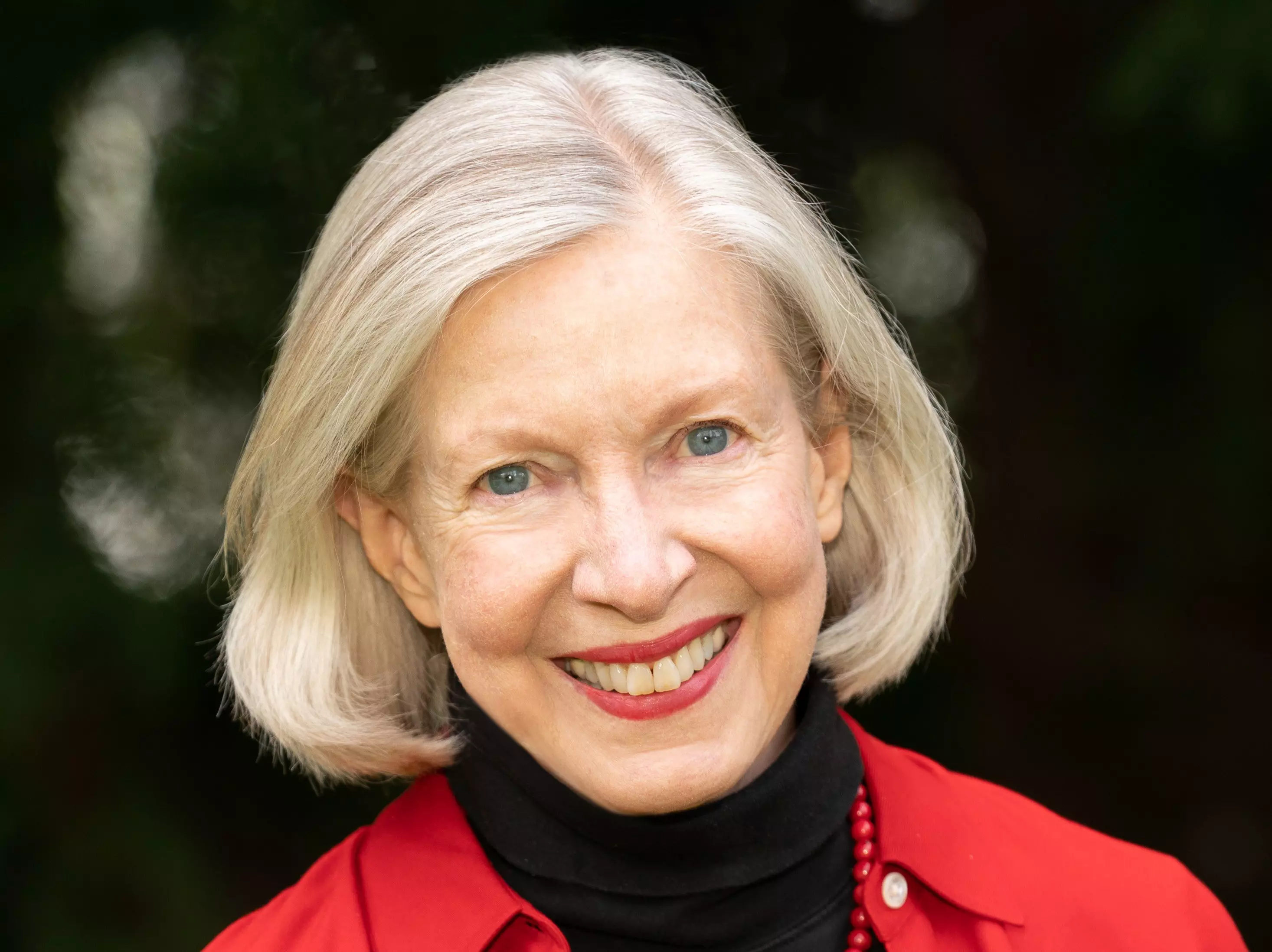
Living Legends: Classical Producer Judith Sherman Details Her Path To Producer Of The Year & Why Lifelong Learning Is Essential

Palestinian Rapper MC Abdul's "Through My Eyes"
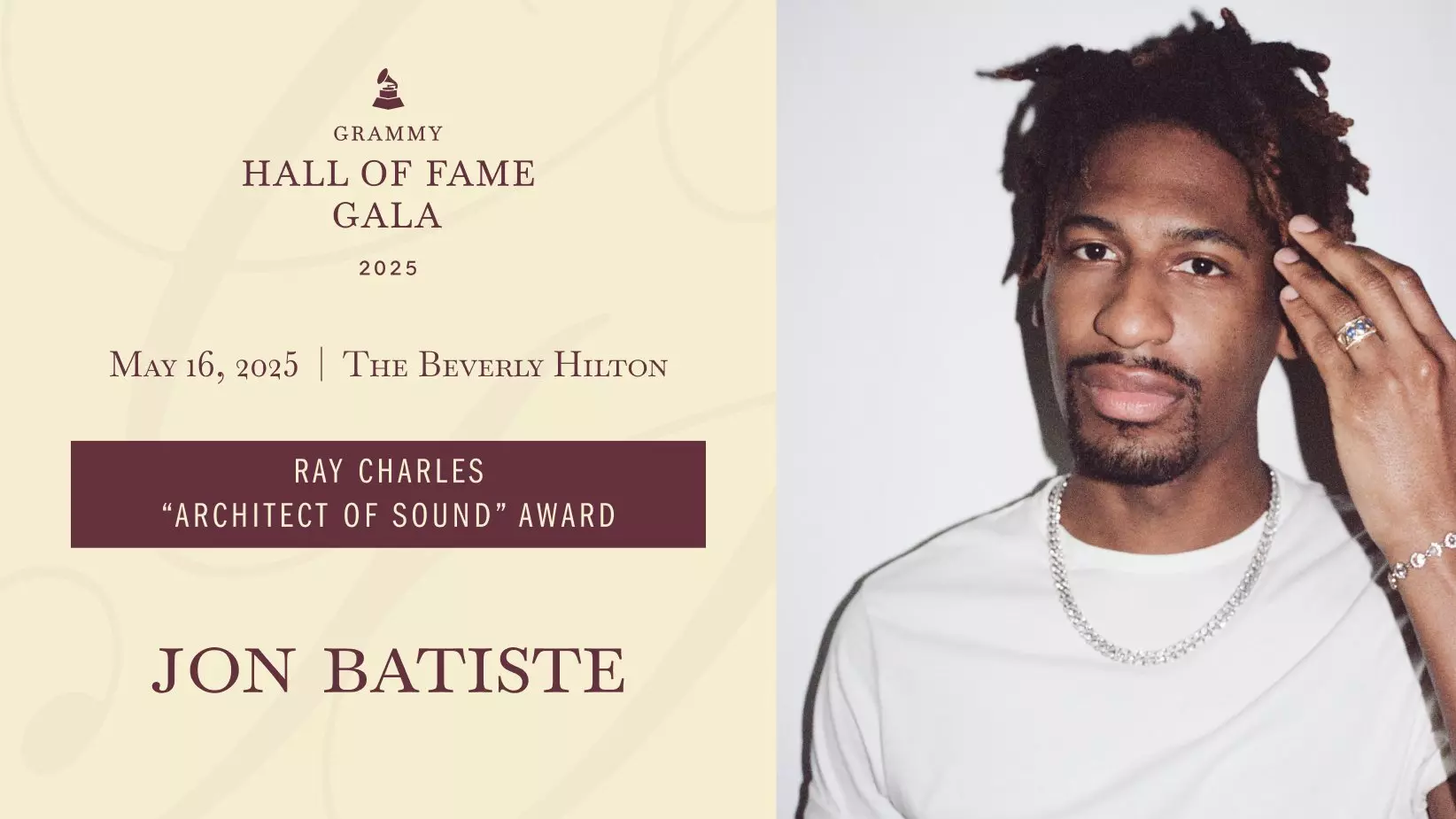
Jon Batiste To Receive Inaugural Ray Charles "Architect of Sound" Award At GRAMMY Hall Of Fame Gala
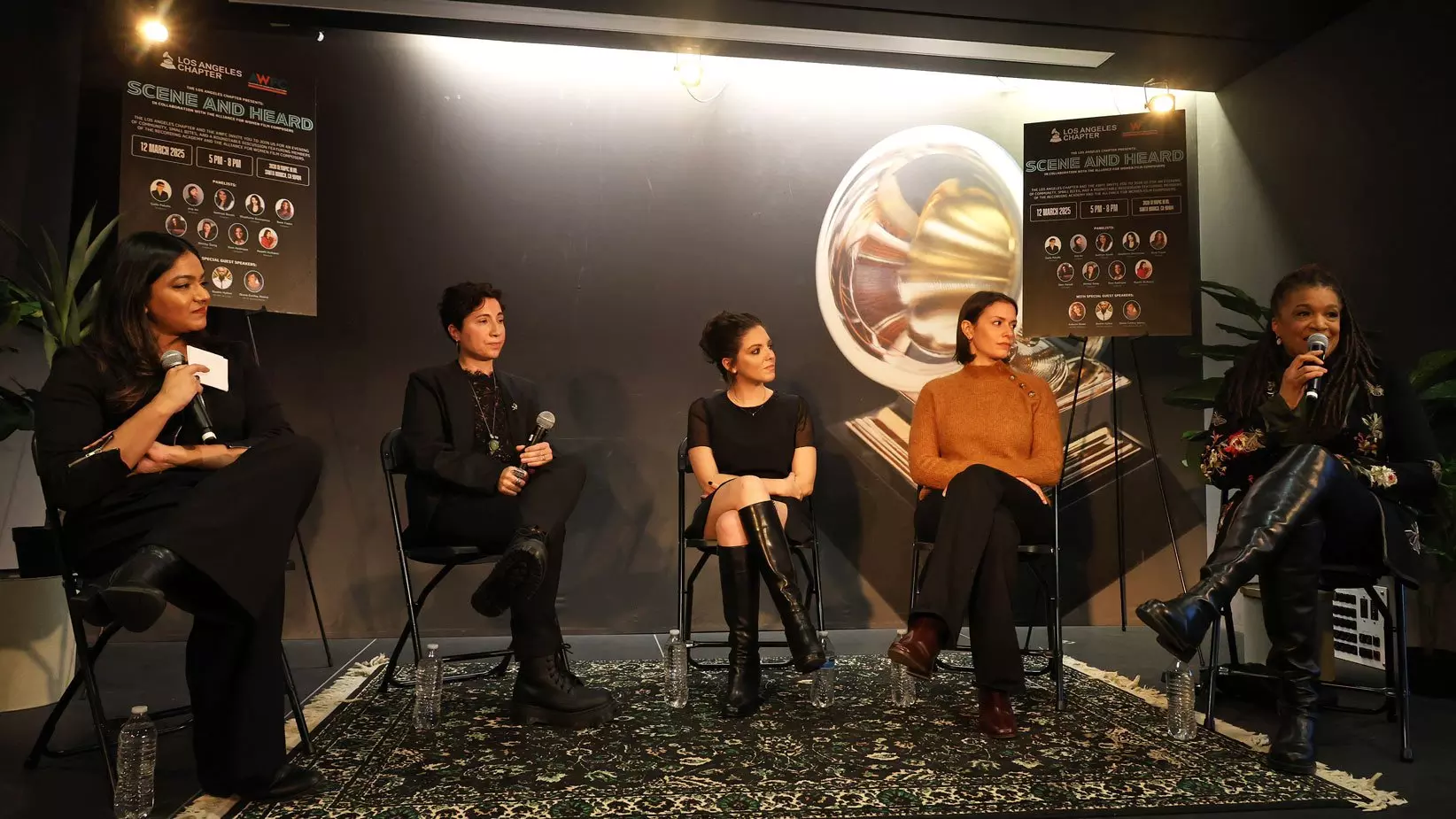
Inside Scene And Heard: Members Of The Alliance Of Women Film Composers Demystify The Art Of Scoring
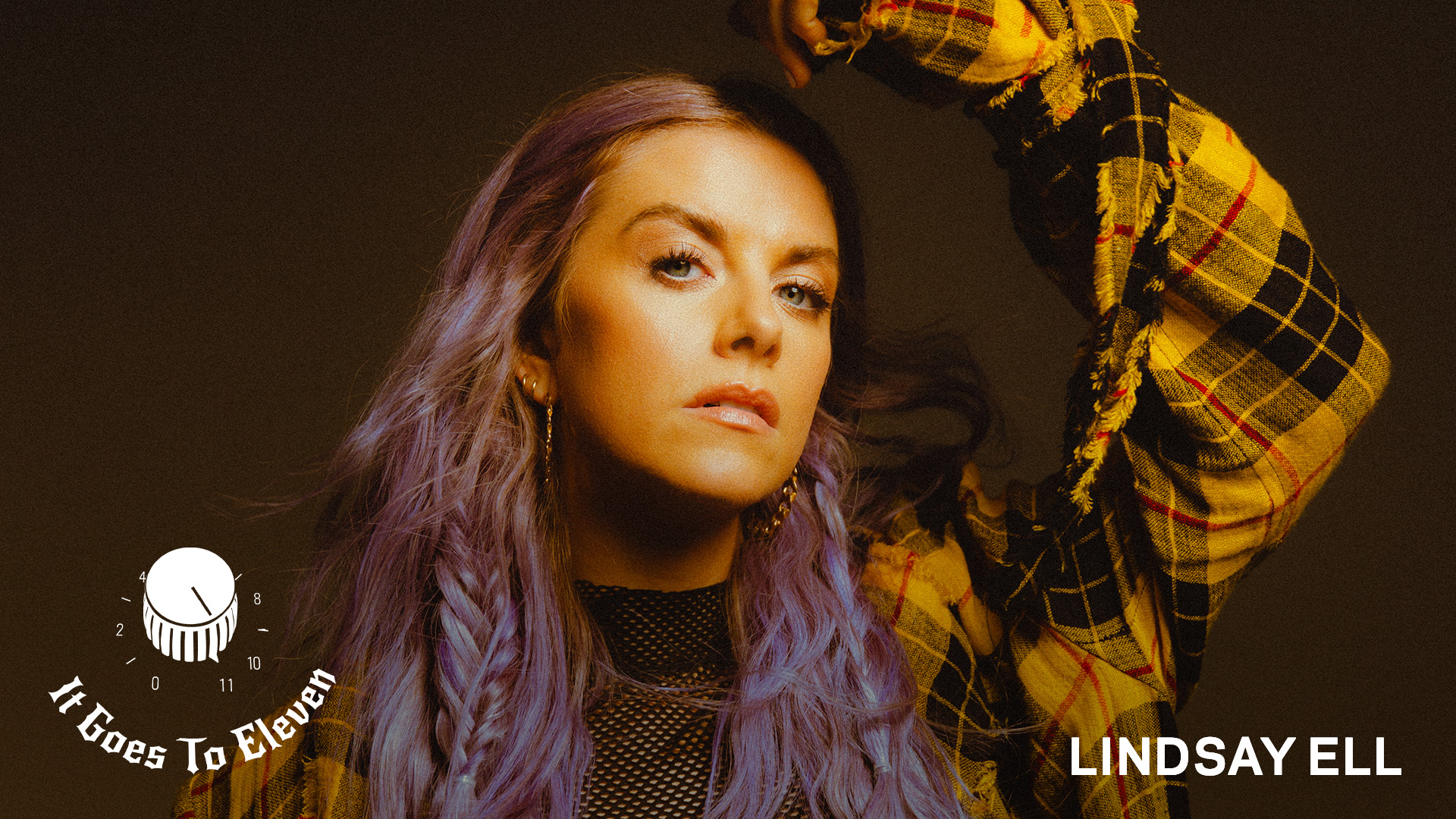
Lindsay Ell Unveils Her Strat Guitar "Snow White"
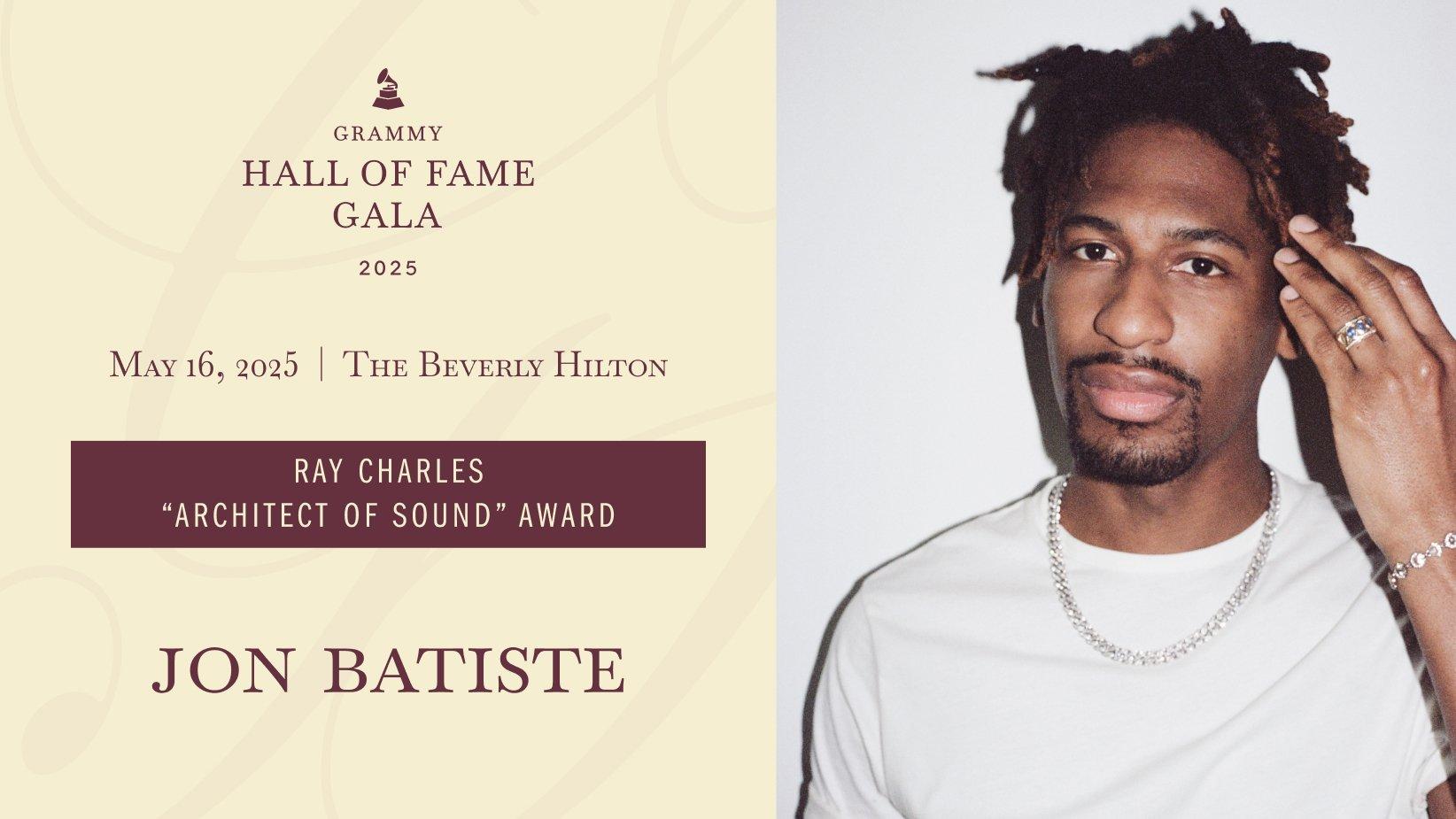
Graphic courtesy of the GRAMMY Museum.
news
Jon Batiste To Receive Inaugural Ray Charles "Architect of Sound" Award At GRAMMY Hall Of Fame Gala
The GRAMMY Museum and Ray Charles Foundation will honor Jon Batiste with the first-ever Ray Charles "Architect of Sound" Award at the 2025 GRAMMY Hall of Fame Gala, where he will also perform.
The GRAMMY Museum has announced the creation of the Ray Charles "Architect of Sound" Award, an annual honor that will be presented at the Recording Academy and GRAMMY Museum’s GRAMMY Hall Of Fame Gala. The inaugural recipient, multi-GRAMMY Award-winning artist Jon Batiste, will receive the award on May 16 at The Beverly Hilton in Los Angeles, where Batiste will also perform.
Inspired by the genre-spanning genius of Ray Charles — whose legacy as a performer, pianist, songwriter, producer, and entrepreneur forever transformed the musical landscape — the "Architect of Sound" Award honors an artist whose innovation, influence, and creative vision have left a lasting impact on music and culture. Batiste, known for his genre-defying work as a pianist, composer, bandleader, and singer/songwriter, exemplifies the award’s purpose of recognizing transformative artistry. A 17-time GRAMMY winner with 10 recordings inducted into the GRAMMY Hall of Fame and a Recording Academy Lifetime Achievement Award honoree, Ray Charles was one of the most influential artists of all time.
"Ray Charles is a beacon for me, a blueprint," said Batiste. "He is a singular example of musical genius, artistic freedom and craft of the highest level that will continue to inspire humanity for generations. I am honored to receive this award."
Batiste is a seven-time GRAMMY and Academy Award-winning singer, songwriter, and composer. His latest release, Beethoven Blues (Batiste Piano Series, Vol. 1), is the first in a solo piano series that reimagines classical works through a fresh, contemporary lens. The album follows World Music Radio (2023), which earned five GRAMMY nominations, including Album of the Year. Batiste also earned an Oscar nomination and a GRAMMY win for his song "It Never Went Away," featured in the Netflix documentary AMERICAN SYMPHONY. His innovative score was also featured in Jason Reitman’s 2024 film SATURDAY NIGHT.
Michael Sticka, President/CEO of the GRAMMY Museum, added, "Ray Charles was a trailblazing artist whose influence knows no bounds, and Jon Batiste is a true reflection of that legacy. Beyond his immense talent, Jon has been a dedicated partner in advancing the GRAMMY Museum’s mission to make music education more accessible. Honoring him with the inaugural Ray Charles ‘Architect of Sound’ Award is not just fitting—it’s a celebration of two artists who have shaped the sound of generations."
“Ray Charles was always pushing music forward — blending genres, breaking barriers, and inspiring generations,” said Valerie Ervin, President of The Ray Charles Foundation. “He would be deeply honored to have his name attached to an award that celebrates artists who share his fearless creativity and dedication to their craft. Jon Batiste embodies that spirit, and The Ray Charles Foundation is proud to join the GRAMMY Museum in recognizing his extraordinary contributions to music.”
Batiste will deliver two special performances during the Gala, which will also include musical tributes and one-of-a-kind moments from a lineup of artists to be announced. The event will also honor this year’s label honoree, Republic Records.
CBS News journalist Anthony Mason will return as host. The show will be produced by former GRAMMY Awards Executive Producer Ken Ehrlich, alongside Ron Basile, Lindsay Saunders Carl, and Lynne Sheridan, with musical direction by GRAMMY and Latin GRAMMY-winning composer, producer, and conductor Cheche Alara.
The 2025 GRAMMY Hall Of Fame Gala will celebrate this year’s inducted recordings, which include iconic albums and singles such as JAY-Z’s Reasonable Doubt, Cat Stevens’ Tea For The Tillerman, Carlos Santana’s Supernatural, and classics by Big Star, Clara Ward, Eddie Floyd, Emmylou Harris, Fela Kuti & Afrika 70, Geeshie Wiley, Gloria Estefan & Miami Sound Machine, J.D. Crowe & The New South, Linda Martell, and Luther Vandross.
Established in 1973 by the Recording Academy’s National Trustees, the GRAMMY Hall Of Fame honors recordings that have qualitative or historical significance and are at least 25 years old. Inducted recordings are selected annually by a special member committee of professionals across the recording arts, with final approval by the National Board of Trustees. With the 13 new additions this year, the Hall Of Fame now includes 1,165 recordings. Eligible recipients will receive an official certificate from the Recording Academy.
Tickets for the 2025 GRAMMY Hall Of Fame Gala are on sale now. For details and sponsorship opportunities, visit grammymuseum.org.
Latest News & Exclusive Videos

Living Legends: Classical Producer Judith Sherman Details Her Path To Producer Of The Year & Why Lifelong Learning Is Essential

Palestinian Rapper MC Abdul's "Through My Eyes"

Jon Batiste To Receive Inaugural Ray Charles "Architect of Sound" Award At GRAMMY Hall Of Fame Gala

Inside Scene And Heard: Members Of The Alliance Of Women Film Composers Demystify The Art Of Scoring

Lindsay Ell Unveils Her Strat Guitar "Snow White"
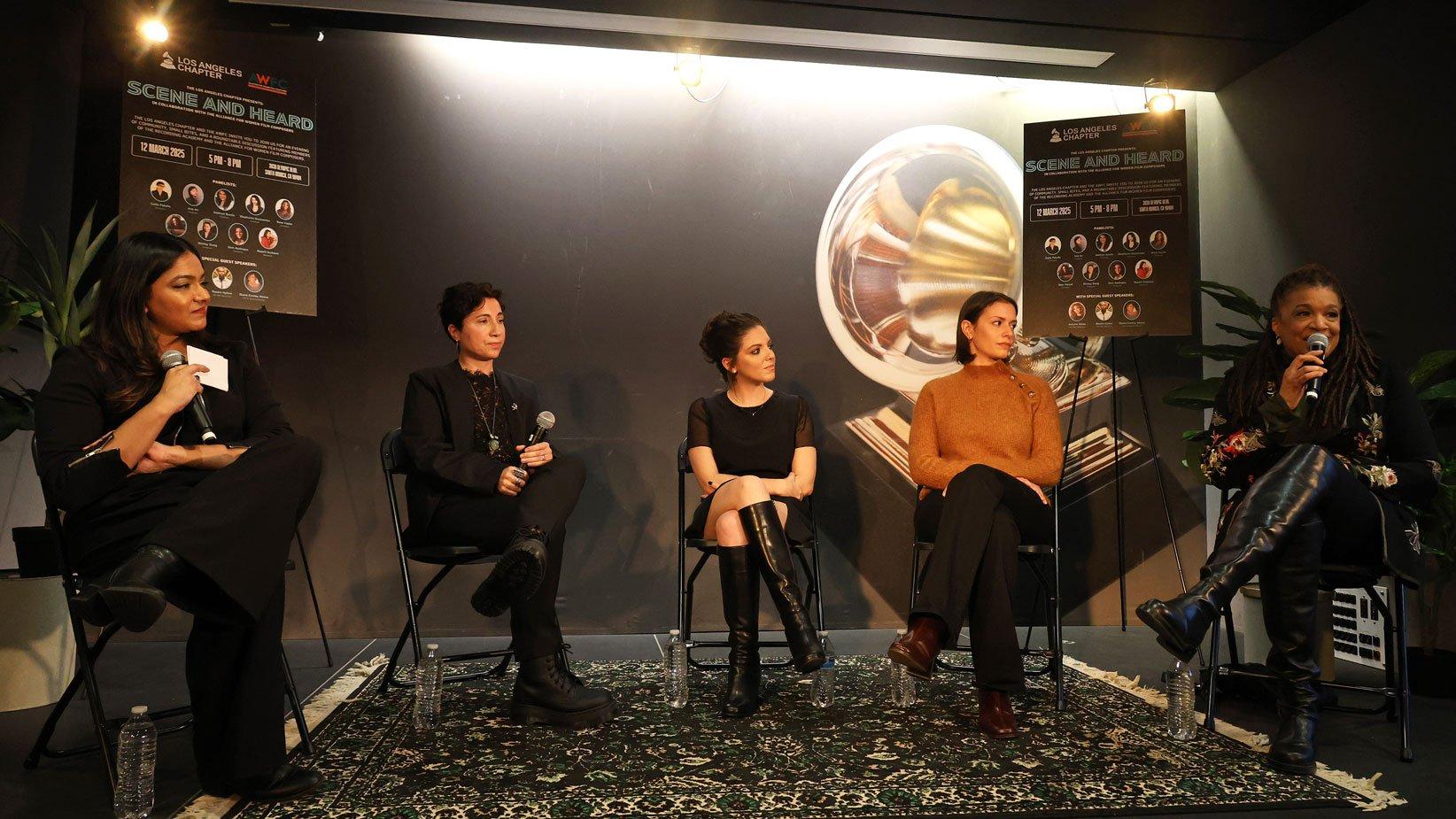
Photo: Kayla Oaddams/Getty Images for The Recording Academy
news
Inside Scene And Heard: Members Of The Alliance Of Women Film Composers Demystify The Art Of Scoring
In honor of Women's History Month, the Recording Academy's Los Angeles Chapter partnered with The Alliance of Women Film Composers to host an inspiring evening of conversation, insight, and community.
Amid grey, cloudy skies and intermittent rain rare for Southern California, a group of music professionals and creators gathered at the Recording Academy's office in Santa Monica on March 12 for "Scene and Heard," a panel and networking event produced by the Academy's Los Angeles Chapter in partnership with The Alliance of Women for Film Composers (AWFC). Eight panelists as diverse as the wide array of projects they've scored and arranged — from the Amazon film "The Tender Bar" (George Clooney) to Netflix's "Wednesday" (Tim Burton) — shared their insights on music's nuanced and critical role in film, television, and other media in two separate panels, coordinated in celebration of Women's History Month.
"We've been talking about this for two years, but we were able to make it happen," Senior Executive Director of the Los Angeles Chapter Qiana Conley Akinro told the crowd of more than 100 in-person and virtual attendees, eliciting cheers and applause.
In addition to members of the Los Angeles Chapter and the AWFC, the audience included creatives from other Academy chapters nationwide, including Nashville, Texas and New York. Executive Director of the AWFC, Los Angeles Chapter Advisor, and composer Raashi Kulkarni moderated both of the evening's panels.
The first panel featured South Korean composer Jina Hyojin An, whose credits include the Netflix series "Exploding Kittens" and the Academy Award-nominated animated feature The Breadwinner; American pianist, film producer, music producer, arranger, music director, and former AWFC president Starr Parodi, best known for her GRAMMY-winning performances and production on Kitt Wakeley's An Adoption Story; Australian film/TV composer Shirley Song, who worked alongside An on "Exploding Kittens" and recently scored the Apple TV+ series "BE@RBRICK"; and American composer Dara Taylor whose credits include "The Tender Bar," and "Strays."
The second panel comprised Turkish GRAMMY Award-nominated composer and conductor Esin Aydingoz ("Wednesday"); two-time Emmy Award nominee, American composer and singer/songwriter Kathryn Bostic ("Amy Tan: Unintended Memoir"; "Toni Morrison: The Pieces I am"); GRAMMY Award-winning American composer and violinist Stephanie Economou (Best Score Soundtrack for Video Games and Other Interactive Media, "Assassin's Creed Valhalla: Dawn Of Ragnarok"); and GRAMMY Award-winning American singer/songwriter, film composer, and director Carla Patullo (Best New Age, Ambient or Chant Album, So She Howls).
Both panels highlighted the complexities inherent to scoring — describing it as an intuitive dance between composers and directors or producers, who often know the emotion they hope to evoke but may not have the words to express it.
"In a way, composers are translators because we want to hear what the film maker in the studio has to say without ever making them feel like they're not communicating," explained Parodi. "I can't tell you how many times people say, ‘I don't know anything about music, but can you make this more red or something?' It's our job to turn adjectives into musical expression."
Dara Taylor recalled reworking a scene with an independent filmmaker who kept telling her, "I'm not sure if that is quite it." After multiple attempts, Taylor finally asked, "What do you want this to say?" The filmmaker paused and admitted, "It doesn't really say anything does it? I just kept it in there because it was pretty to watch." Ultimately, the producers cut the scene.
Such moments, while rare, highlight opportunities for composers to offer solutions that elevate a project. On her panel, Economou shared that when she disagrees with collaborators, she still delivers what’s asked but also presents alternative ideas with thoughtful explanations.
"If I do that, I feel like I'm doing my job as a collaborator, because people are not just hiring you to churn out music and say, ‘Thanks, goodbye.' They are not music experts for the most part, and they want someone who's going to push back and say, ‘Hey, no, I think this is actually going to work better," Economou said.
Panelists also emphasized the need for resilience, authenticity and adaptability to blunt the sting of creative rejection. Community was also a key theme — a sentiment echoed by Kathryn Bostic: "I sing on a lot of my own scores, but I also try to find community, which is why we're here today." Bostic acknowledged the sometimes-solitary nature of her creative process and the intentionality it requires when it comes to networking and building community.
Her observation effectively brought Scene and Heard full-circle, recalling what Los Angeles Chapter Songwriters & Composers Wing Committee Co-Chair Roahn Hylton attested in the event's opening remarks: "Community is everything in this city and our business."
Latest Recording Academy News & Initiatives

Living Legends: Classical Producer Judith Sherman Details Her Path To Producer Of The Year & Why Lifelong Learning Is Essential

Jon Batiste To Receive Inaugural Ray Charles "Architect of Sound" Award At GRAMMY Hall Of Fame Gala

Inside Scene And Heard: Members Of The Alliance Of Women Film Composers Demystify The Art Of Scoring
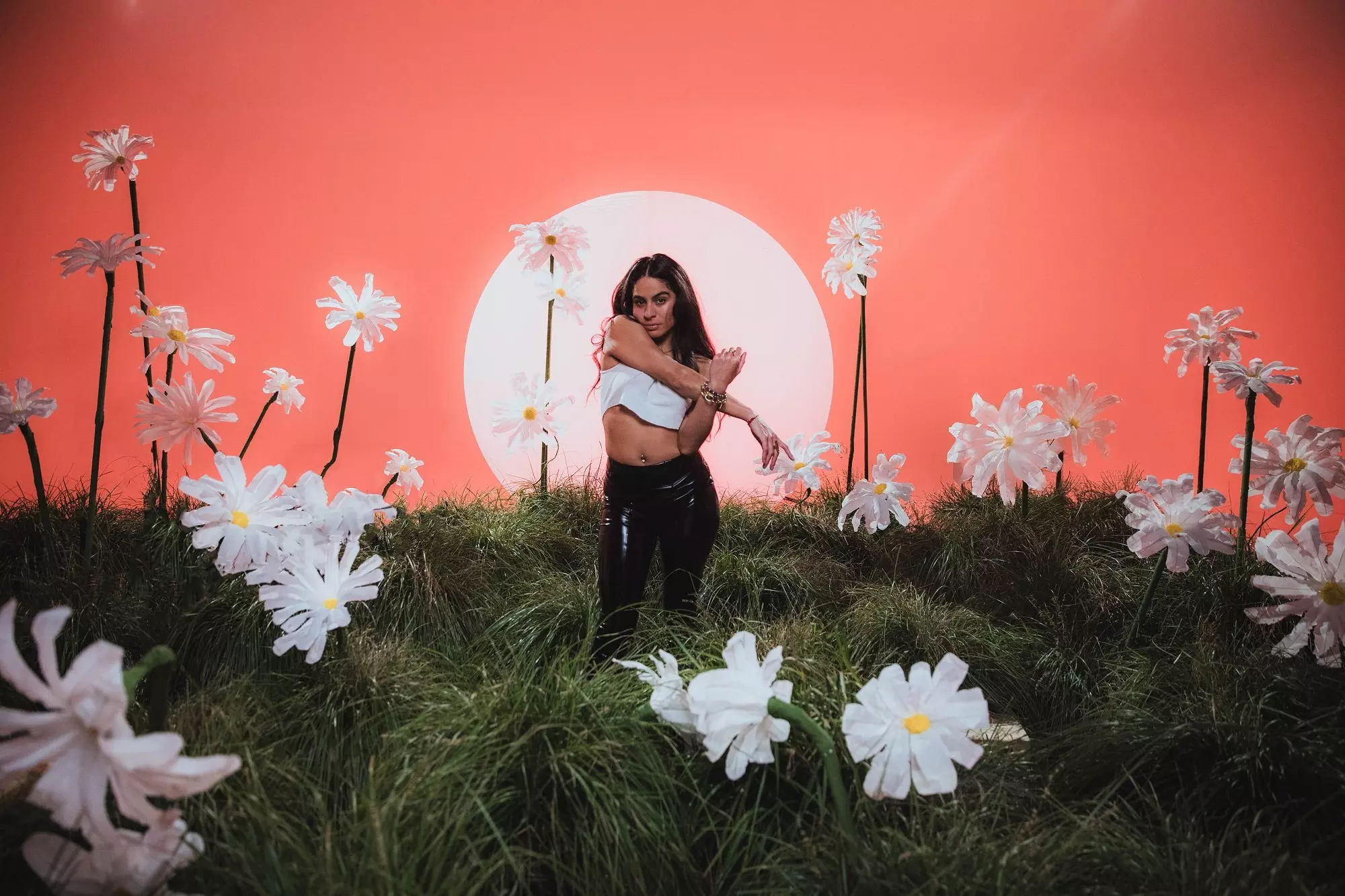
On 'Paid In Memories,' Jessie Reyez Celebrates Her Winding Road
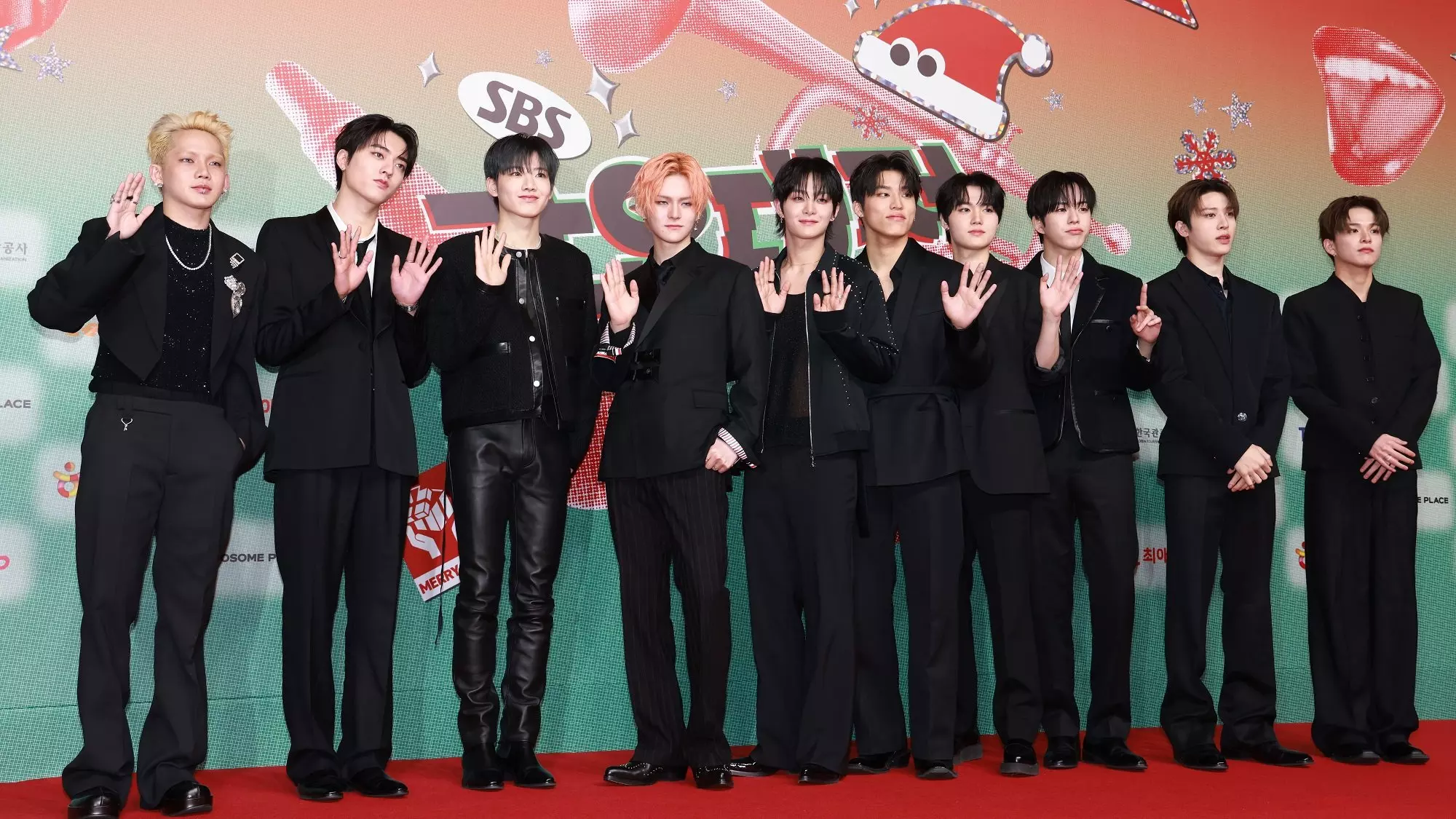
10 Live Events & Exhibits At The GRAMMY Museum In April 2025: See TREASURE, Judy Collins, Margaret Cho & More
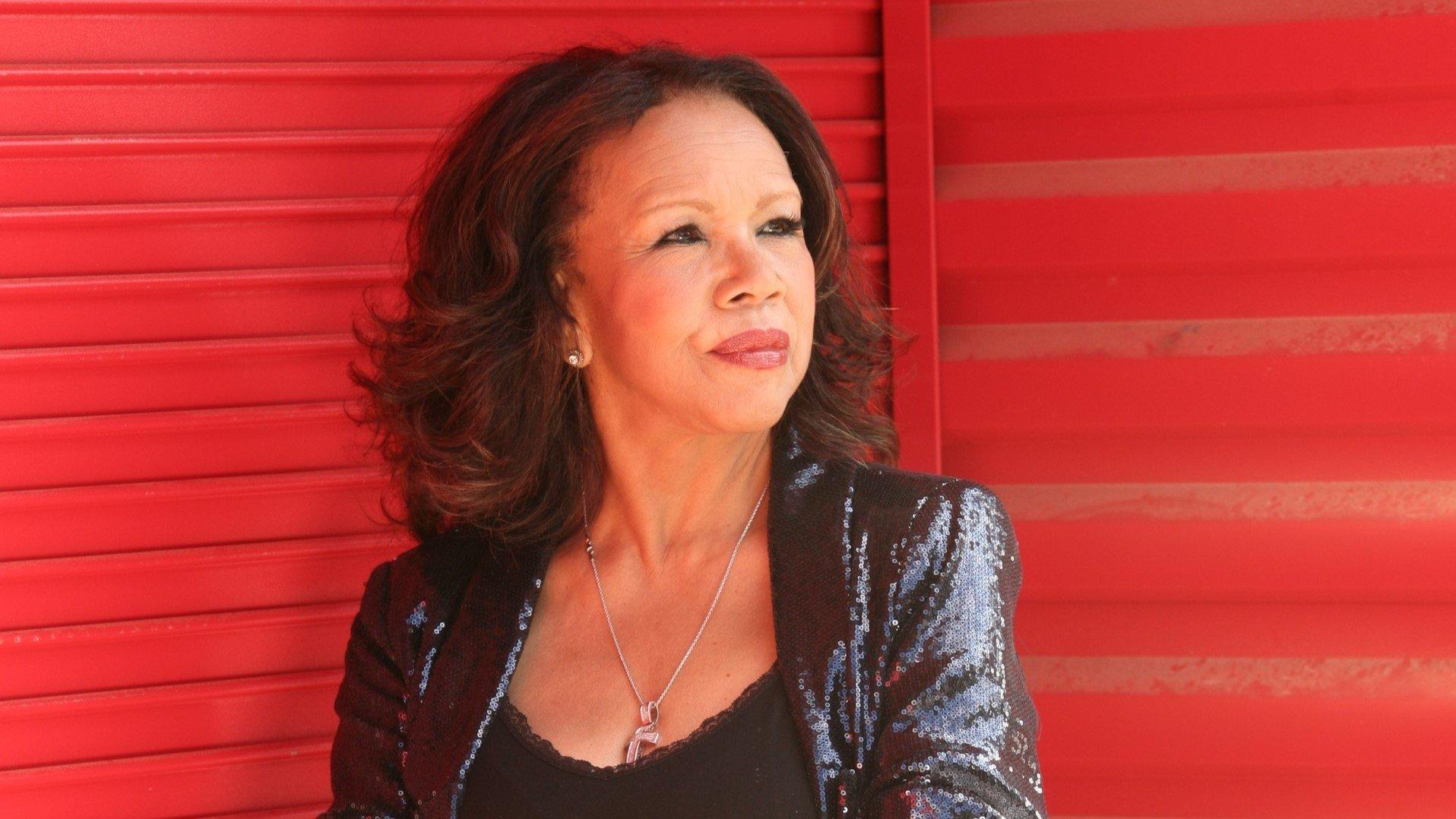
Photo: Sean Cokes
interview
Candi Staton Talks Going 'Back To My Roots,' Her Evolution From Gospel To Disco & Fighting Racism In Music
"I sing from the heart, and the heart don’t lie," the four-time GRAMMY nominee says.
Candi Staton may be most associated with "Young Hearts Run Free," the 1976 hit that thrives on the bittersweet contrast between its heartbreaking lyrics and a lush disco aesthetic. The unequivocal highlight of this timeless dancefloor anthem are Staton’s vocals — wounded, defiant, eternally hopeful — just one example of a dazzling ability that defined her legendary, genre-spanning career.
Canzetta Maria Staton was born in Hanceville, Alabama in 1940, and began performing gospel with a traveling trio when she was still a child. 1970 marked the release of a gritty solo debut — I’m Just a Prisoner — with a repertoire that moves comfortably in the fertile terrain where authentic soul meets gospel and the blues.
Staton enjoyed her greatest commercial success during the disco era, but her discography overflows with underrated gems. Her superlative versions of "Stand By Your Man" (1971) and "In The Ghetto" (1972) were nominated for GRAMMY Awards.
The latest installment in her musical adventures, Back To My Roots, is her 32nd album. A mixture of covers and originals, it offers a summation of everything Staton has achieved during the past 55 years. Highlights include memorable duets with the likes of Stax icon William Bell — the 2017 gem "My God Has a Telephone," by Aaron Frazer — and the uplifting "Hang On in There (God Is At The End Of Your Rope)," with singer/guitarist Larry McRay.
Staton spoke with GRAMMY.com about touring the South in the ‘50s, learning to deal with drunk hecklers, and turning romantic despair into a disco smash.
Let me begin by stating the obvious: you’ve never made a bad record. How do you explain a consistency of such epic proportions?
I sing from the heart, and the heart don’t lie. Many years ago, [producer] Rick Hall said that I give a pint of blood in every song, and that’s a good analogy, because I’m never satisfied. I’m a perfectionist, and I sing every single track like it’s going to be a No. 1 record.
At what point did you become conscious of the fact that there is magic in your voice?
I was born in Alabama, and we sang in church all the time. I didn’t realize that there was something special until people started telling me. They would tell my Mom: ‘that little girl can really sing.’ I had a grownup voice at nine.
As a young girl in the 1950s, you toured the country singing gospel. What was that like?
I was 11. It was me, my older sister and another girl — we were called the Jewell Trio. Three girls with ponytails, can-can dresses and black leather shoes. We would get up there with a five piece rhythm section and sing our little hearts out. I stayed with the Trio until I was 17. I got the chance to hang out with Sam Cooke, the Staple Singers, the Five Blind Boys and Mahalia Jackson. They were just like friends, like I’m sitting here talking to family. We were all together.
For Black people, this was such a complicated and unforgiving country. Did that affect your daily life as a touring outfit?
It was such a bad time. There was no integration, so we had to stick together, especially going through the South. We traveled together in caravans, and we would all trail each other.
We had the safe houses on our way, so we could rest, but there were few of those, and we couldn't get into motels at the time. So we just slept in the cars, bought bread and bologna and made sandwiches for the road. The ladies of the houses would always have a big dinner waiting for us when we got there. There were no telephones, so we wrote letters letting them know when we would be getting there.
Was the Jewell Trio popular?
We were like the Jackson 5 in the ‘50s. You have to understand that at the time, quartet singers didn’t have anything except for maybe a guitar. And here comes a vocal trio with a five piece rhythm section. We had drums. They had never seen anything like it. So when one of us would stop singing lead, the steel guitar took over, and it sounded like a voice. It was amazing.
Your early days in music were marred by racism and strict segregation, situations that are unthinkable by today’s standards. But it sounds like you didn’t allow the ugly side of reality to get in the way of your personal happiness.
That’s true, because it’s hard to be a creative person in sadness. You need joy in order to create. So we looked at the positive side of things. It’s OK. God is going to take care of us. We got people waiting for us, and we can’t go onstage with sad faces.
We had to lift people up, because everybody at the time was going through the same things. Black men were being castrated and hung and all that. Don’t think that we didn’t know what was going on. We did, but we couldn’t let it bother us. We had to keep our chin up.
I want to touch on my favorite album of yours, which is 1971’s Stand By Your Man. It’s so incredibly self-assured — everything in it perfectly measured, elegantly balanced — it’s astonishing to me that this is only your second LP. How did you achieve such a mature sound?
I don’t know. It’s just what I feel. When I went solo, I didn’t know how to transfer my gospel to a secular audience. At the time, I had gone through a horrible marriage with my ex-husband, who was very abusive and left me with children that I had to raise alone. Then I married a good friend of mine, [blind singer/songwriter] Clarence Carter, and he took me under his wing. He showed me how to do those first solo shows.
Did you feel vulnerable when you performed solo for the first time?
I was heckled, and ran off the stage crying. I had a little yellow dress on, and stood there looking up to God. The people were there to dance and have a good time. They were half drunk, and one of them screamed out: "Whatever happened to Baby Jane?" It was a reference to the Bette Davis movie, because my hair was halfway down my back. I was a light skinned colored woman with pretty curly hair. I didn’t have an afro. They were booing, and I said to myself: I’m never going back there, ever. I’m going home to Mama.
How did you recover from such a horrible experience?
I was opening for Clarence at the time; this was our second show together. And he said, "Oh, well, we’re going to take care of that." The next day, he called a rehearsal. And he gave me songs. Then I went to California, where they cut all my hair off and gave me an afro. Some of the guys in the band taught me how to be sexy. They took me shopping, and I got a couple of little gowns, because I was about size four.
I remember Jerry Butler standing in the wings one night. After the show, he told me: "You’re not in church anymore. You have to look people in the eyes. You got to sing to them. These people came to see a show. They want to be personal with you." It was a process.
Let’s move into the mid-‘70s. How did you tackle the gradual transition from soul to funk to disco?
It was a lot of fun doing that type of music, because you have to understand that I was in the Chitlin’ Circuit. It was tiny little clubs where you brought your own bottle, and people got drunk. If you didn’t sing the right song, they would throw bottles at you. I remember one night the organ player almost got hit — he had to duck. I learned how to deal with hecklers quickly, but I was coming out of that atmosphere.
Then I did eight albums with [producer] Rick Hall, and most of them were blues. Then I was going to Vegas, and Lake Tahoe, but I had nothing to back it up. But I got a glimpse of what it was like to perform for that type of audience, and yearned for it. I didn’t know how to get in there, because Rick would only do R&B. He never got the disco thing.
But then, in 1976, you recorded "Young Hearts Run Free."
Warner Brothers signed me up and gave me a new contract. They were just starting to do disco. [Producer] David Crawford was in Burbank, and he was looking for a new artist. I knew him well, because I was on the road with him when he was playing gospel music with the caravans. We were working in the studio, and one day we went to have lunch together.
At the time, I was with this guy who was beyond abusive. He was threatening to kill my mother and my kids if I ever left him. I was just sick, and was like, "David, how can I get out of this?" He said, "I don’t know," but I noticed he was writing down everything I was saying. That became the basis of "Young Hearts Run Free."
What was the recording session like?
I had to do some shows, and when I came back to finish the album, David told me: "I’m writing you a song that’s going to last forever." I walked into the studio and this uptempo song was playing — the most beautiful music I had ever heard. We walked to the vocal booth together, and he had written the lyrics on a sheet of paper. Everything I was going through at the time was in there.
He walked back to the control room, and the music started playing. I knew exactly where to come in, I started to sing, and my heart felt so full. I was singing my own story. I recorded it once, and told David that I was practicing. "That wasn’t practice," he said. "That was real." It’s been out for 50 years, and still going strong.
You went back to gospel during the ‘80s, but this wasn’t your average gospel. The arrangements were so progressive.
I just did me. I don’t care what I’m singing, I’m always going to be myself. At one point a label wanted to sign me, but they wanted to record old fashioned stuff like "Amazing Grace" and "Precious Lord." I love those songs, but I wasn’t feeling them at that particular time. I always look to do something from my heart.
Which brings us to Back To My Roots. I was especially moved by "My God Has a Telephone," your duet with William Bell.
We’ve been friends for years. Gosh, we’ve done so many gigs together. We talk about the old days and laugh for hours — you know, there’s not many of us left.
William came over, he sang the second verse and did a great job. We had fun doing it, and I appreciate him. Now I owe him one, because he didn’t charge me a thing. He just said, "How can I charge a friend?"
This album exudes so much joy and wisdom. I’m just wondering how you managed to survive for so long in such a merciless industry.
The Roots album is like a conclusion to everything I’ve done. The song "Love Breakthrough" refers to everything that we’re experiencing in America right now, with so much hate and all this bad stuff going on. It’s not necessary. Our lives are too short and fragile for all that. We need a love breakthrough, because love can always overshadow hate. We’re all human. We all go through the same things in life.
Latest News & Exclusive Videos

Living Legends: Classical Producer Judith Sherman Details Her Path To Producer Of The Year & Why Lifelong Learning Is Essential

Palestinian Rapper MC Abdul's "Through My Eyes"

Jon Batiste To Receive Inaugural Ray Charles "Architect of Sound" Award At GRAMMY Hall Of Fame Gala

Inside Scene And Heard: Members Of The Alliance Of Women Film Composers Demystify The Art Of Scoring

Lindsay Ell Unveils Her Strat Guitar "Snow White"
